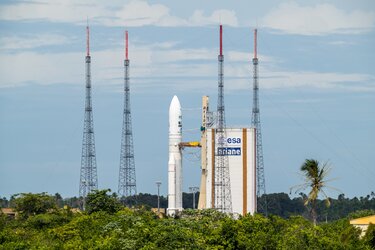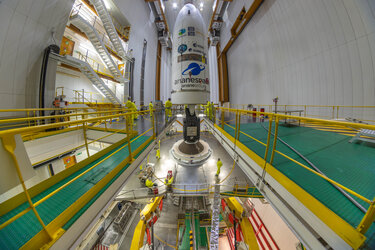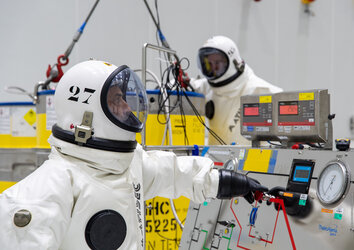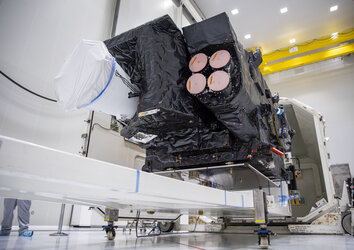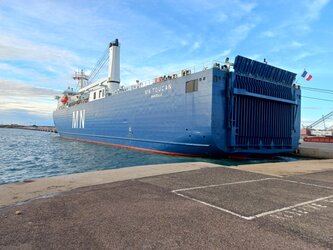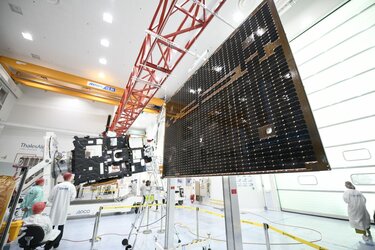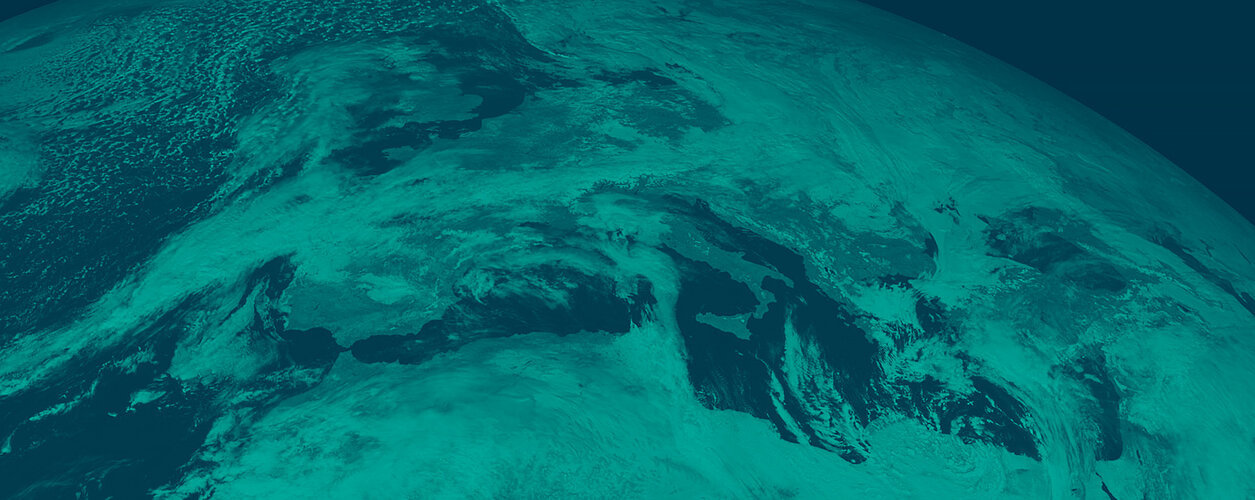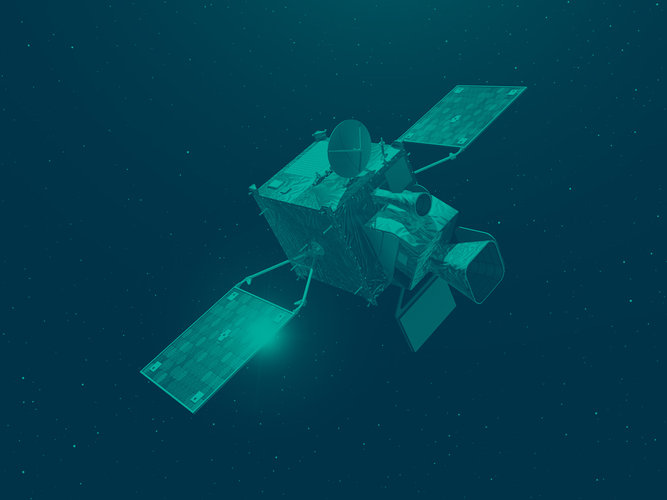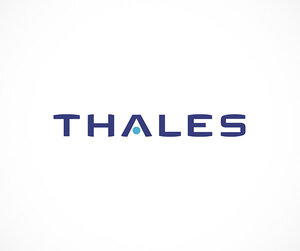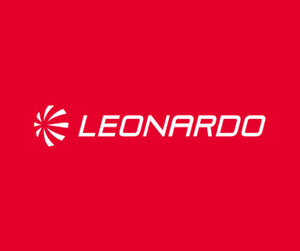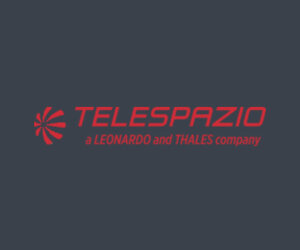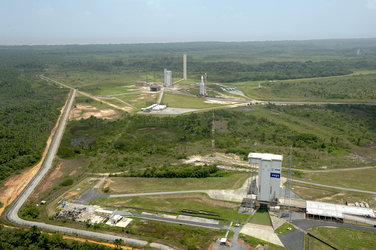A new era of weather forecasting begins
The Meteosat Third Generation Imager satellite, set to revolutionise short-term weather forecasting in Europe, lifted off on an Ariane 5 rocket at 21:30 CET (17:30 local time in Kourou) on 13 December from Europe’s Spaceport in French Guiana.
The satellite separated from the rocket 34 minutes later and then Malindi ground station in Kenya received the signal from MTG-I1, indicating the satellite is in good health.
Building on the long-standing partnership between ESA and the European Organisation for the Exploitation of Meteorological Satellites (Eumetsat), the Meteosat Third Generation Imager-1 (MTG-I1) is the first of a new generation of satellites providing crucial observations for the early detection and prediction of fast-developing severe storms, weather forecasting and climate monitoring.

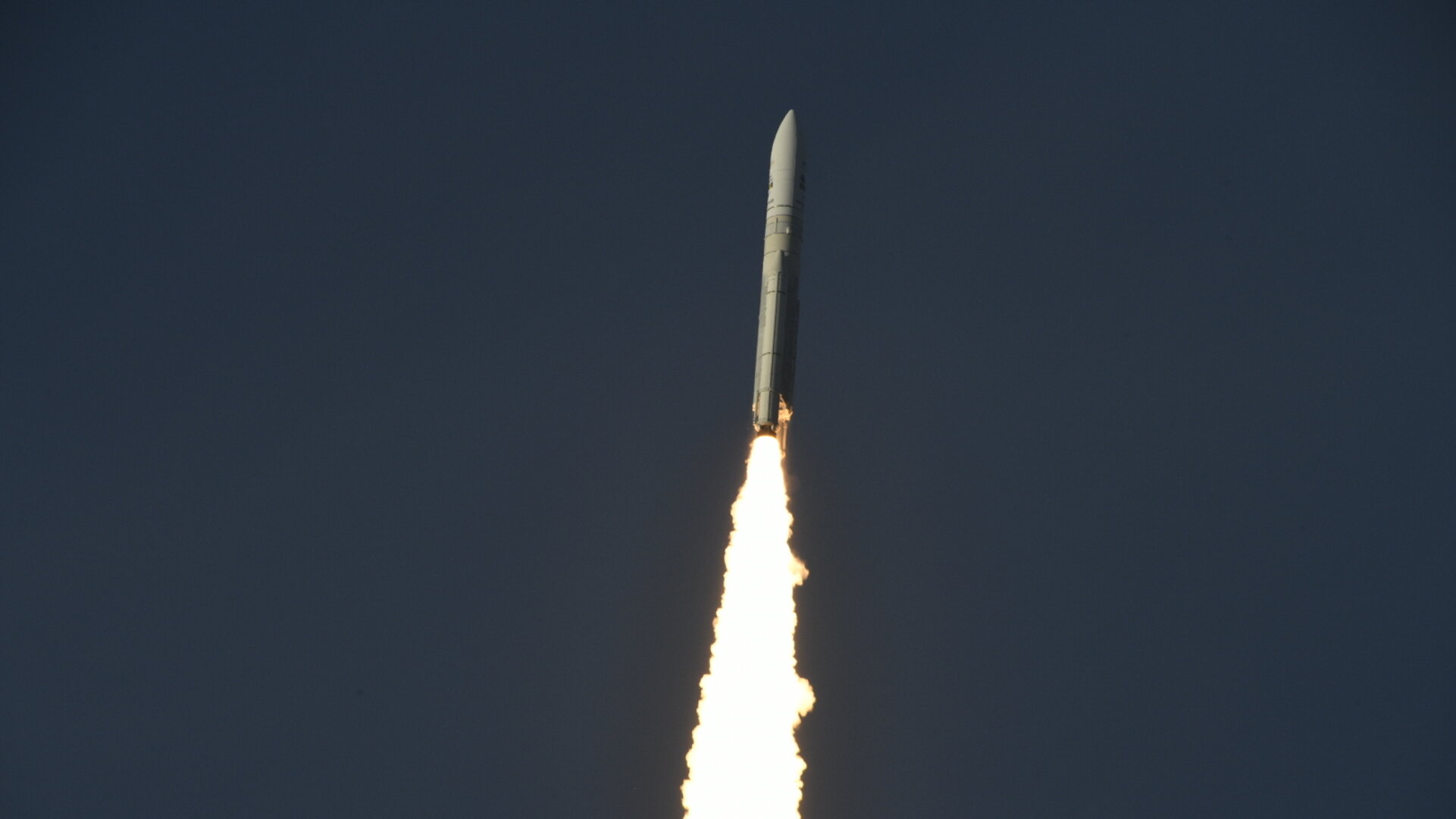
Access the video
This third generation of weather satellites will not only guarantee the continuity of data for weather forecasting from geostationary orbit for the next two decades, but also offers significant enhancement of the current imager capabilities and near realtime lightning imaging – a new capability for European weather satellites.
Paul Blythe, ESA’s Meteosat Programme Manager, commented, “After over a decade of close cooperation and hard work of all involved, to see the first of the MTG-I satellites take to the skies is a profound experience for me. Thanks to all who have made this possible including our friends in the industrial teams throughout Europe ably led by Thales Alenia Space France, my ESA team who have supported me throughout, many of whom have been with me since the start of this adventure and Eumetsat our partners and ultimately owners of the MTG satellites.
“Most recently a big thank you must go to Arianespace and those at Europe’s Spaceport in French Guiana for what has been a flawless launch campaign which has culminated in this beautiful launch.”
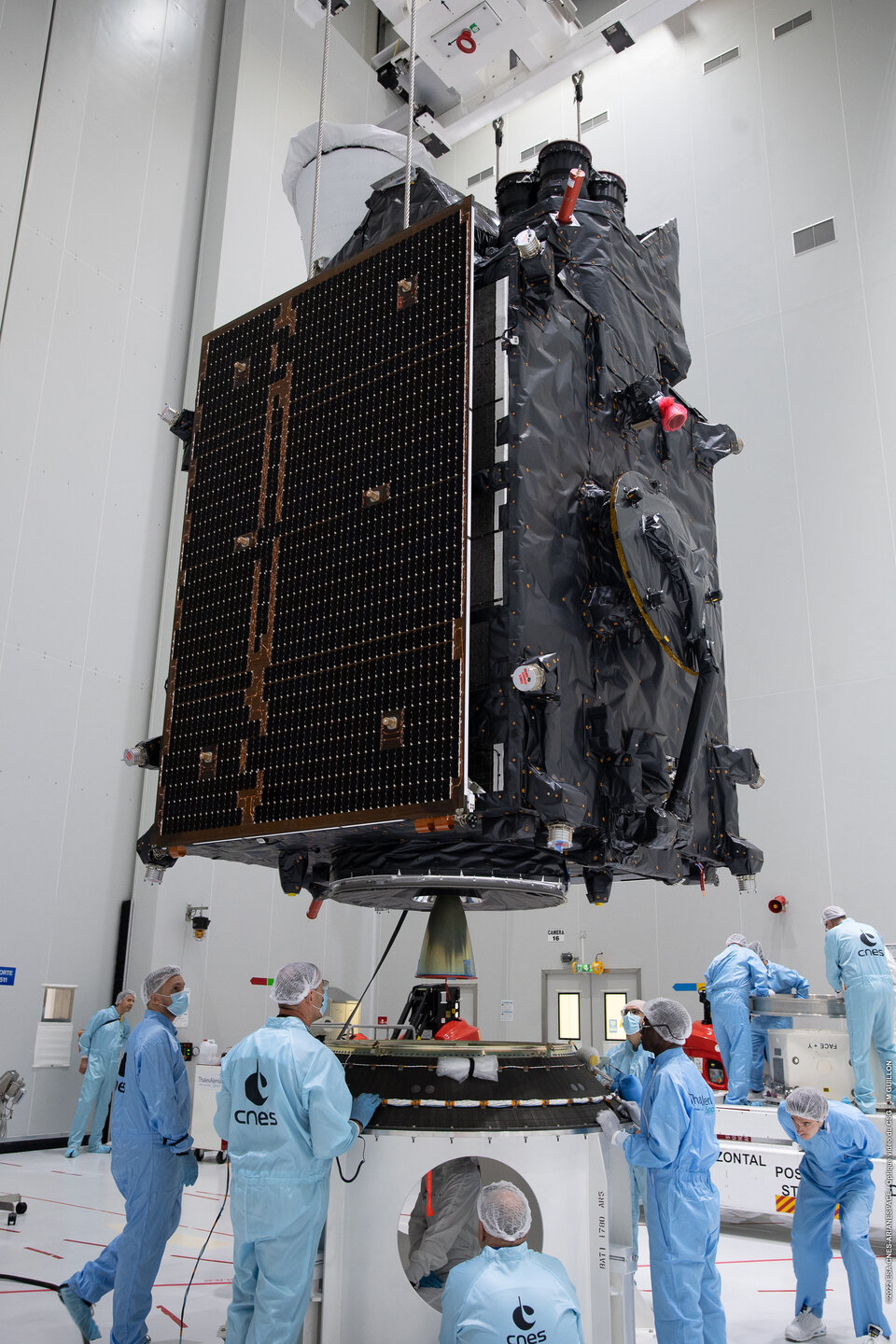
ESA’s Director of Earth Observation Programmes, Simonetta Cheli, said, “I’m extremely proud to see a new era of satellite meteorology begin. I would like to personally thank the teams involved who have dedicated their time, talent and tenacity to make this a success. We would not be here without you.
“MTG was developed thanks to the expertise of ESA, Eumetsat and a highly competitive European space industry. With the satellite’s innovative design and its novel ‘lightning catcher’, MTG will push European weather forecasting into the future. I am very much looking forward to the next decades of working with our European partners, especially the ESA Member States participating in the MTG programme whose contribution will ensure Europe remains a world leader in satellite meteorology, as well as Eumetsat, and all our partners involved. Our cooperation demonstrates the truly global spirit of Earth observation.”
“Meteosat Third Generation is a European success story. The purpose of this multi-billion-euro investment is to provide meteorological services with a vastly increased amount of more precise information which will help them protect lives, property and infrastructure. This system will, literally, save lives,” added Phil Evans, Director General at Eumetsat.
MTG-I1’s journey to space

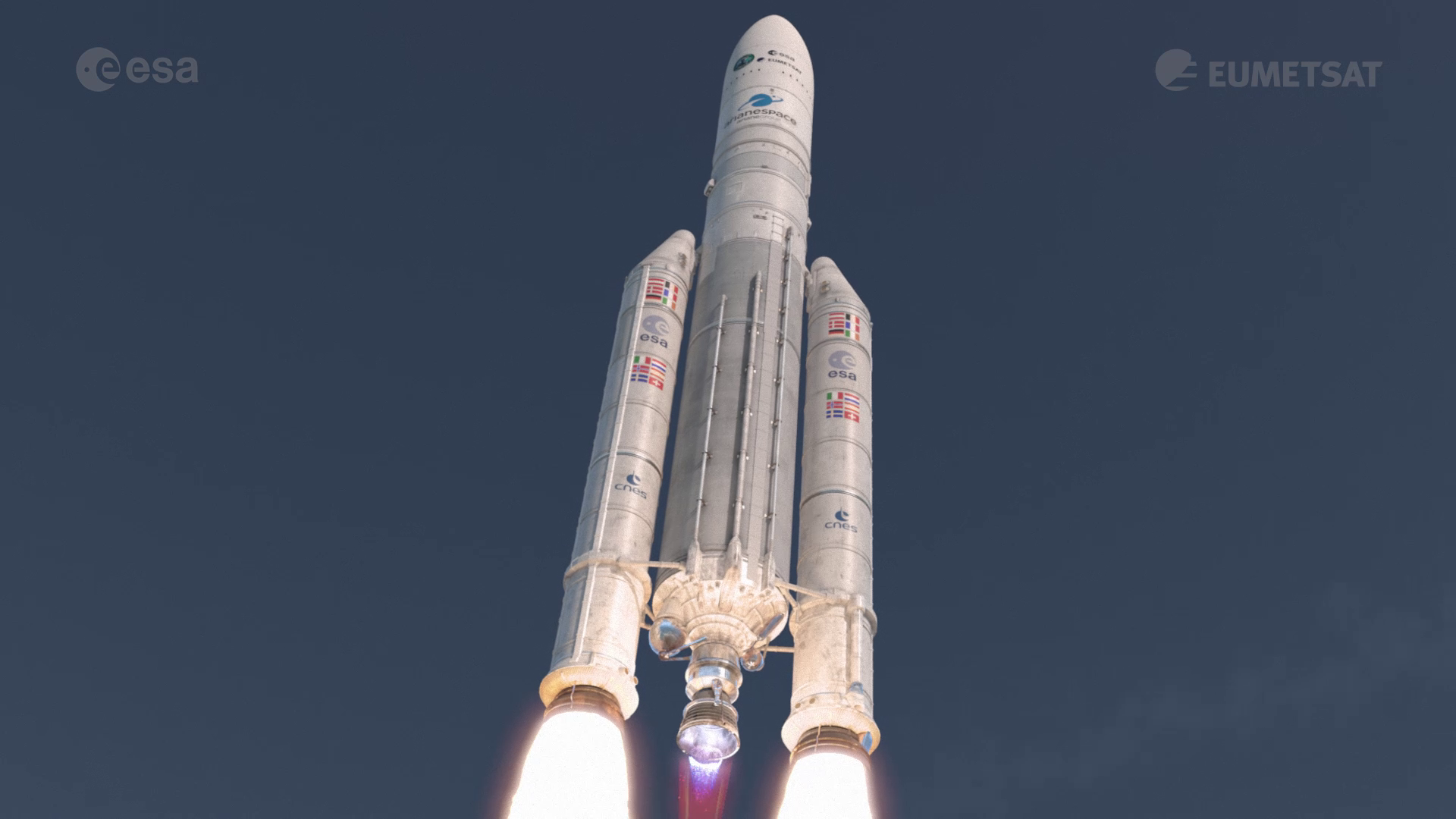
Access the video
Thirty-four minutes after launch, MTG-I1 separated from the Ariane 5 at an altitude of 250 km starting the automated post-separation sequence including solar array deployment and orientation towards the Sun ensuring the safety of the satellite. In its initial few orbits around Earth, the team switched on the satellite to open its solar arrays, and turned them to face the Sun.
From there, the team will boost the satellite from the initial geostationary transfer orbit, which is highly elliptical, to the circular geostationary orbit through a series of burns from the main apogee engine. This phase lasts around five days from where it will be positioned close to its final operational location at zero degrees longitude directly over Ivory Coast.
MTG-I1 and its two rideshare partners – Intelsat's Galaxy 35 and Galaxy 36 telecommunications satellites – made up a total payload mass close to 11 tonnes, including the adapter that stacked them up for the ride to space. That is very nearly the mass record for an Ariane 5 launch to geostationary transfer orbit.
A new era of satellite meteorology
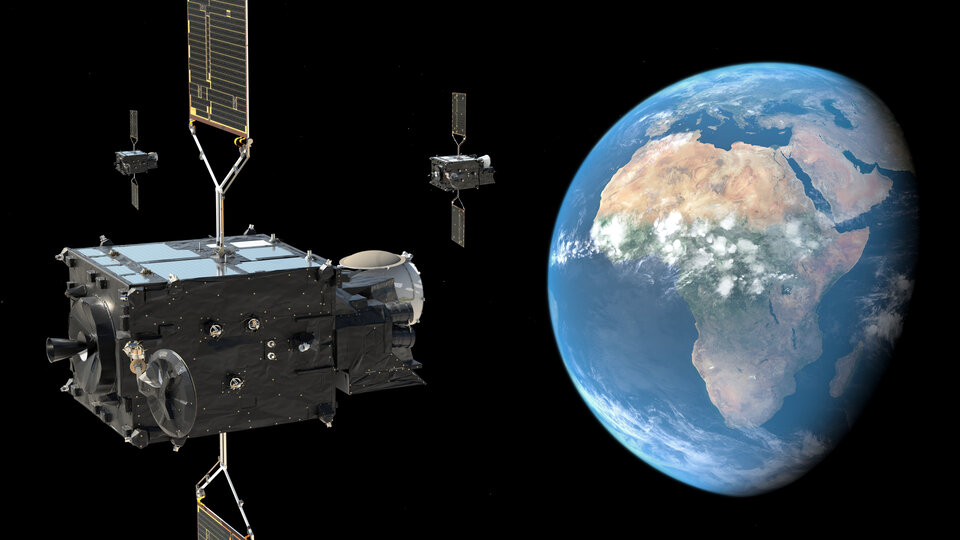
MTG-I1 is the first of six satellites that form the full MTG system, which will provide critical data for short-term and early detection of potential extreme weather events over the next 20 years. In full operations, the mission will comprise two MTG-I satellites and one MTG Sounding (MTG-S) satellite working in tandem.
The MTG-I satellites carry two completely new instruments, a Flexible Combined Imager and Europe’s first Lightning Imager, to deliver high-quality data for better short-term weather forecasting.
The innovative Lightning Imager will be able to capture individual lightning events in the sky, whether day or night. This is the first time a geostationary weather satellite has the capability to detect lightning across Europe, Africa and the surrounding waters. It will continuously monitor more than 80% of the Earth disc for lightning discharges, taking place either between clouds or between clouds and the ground.
The Flexible Combined Imager will utilise two scanning services to build a picture of fast-evolving events. Through its full disc scanning service, the imager will scan the entire Earth disc in just 10 minutes. Through the rapid scanning service, the imager will scan Europe and northern Africa every 2.5 minutes.
Data acquired across 16 different spectral bands provide precise information about everything from clouds to water vapour, to oceans, to local fires. Images will enable earlier prediction of severe weather events, improvements to forecasts and enhancements of essential meteorological systems and environmental events.

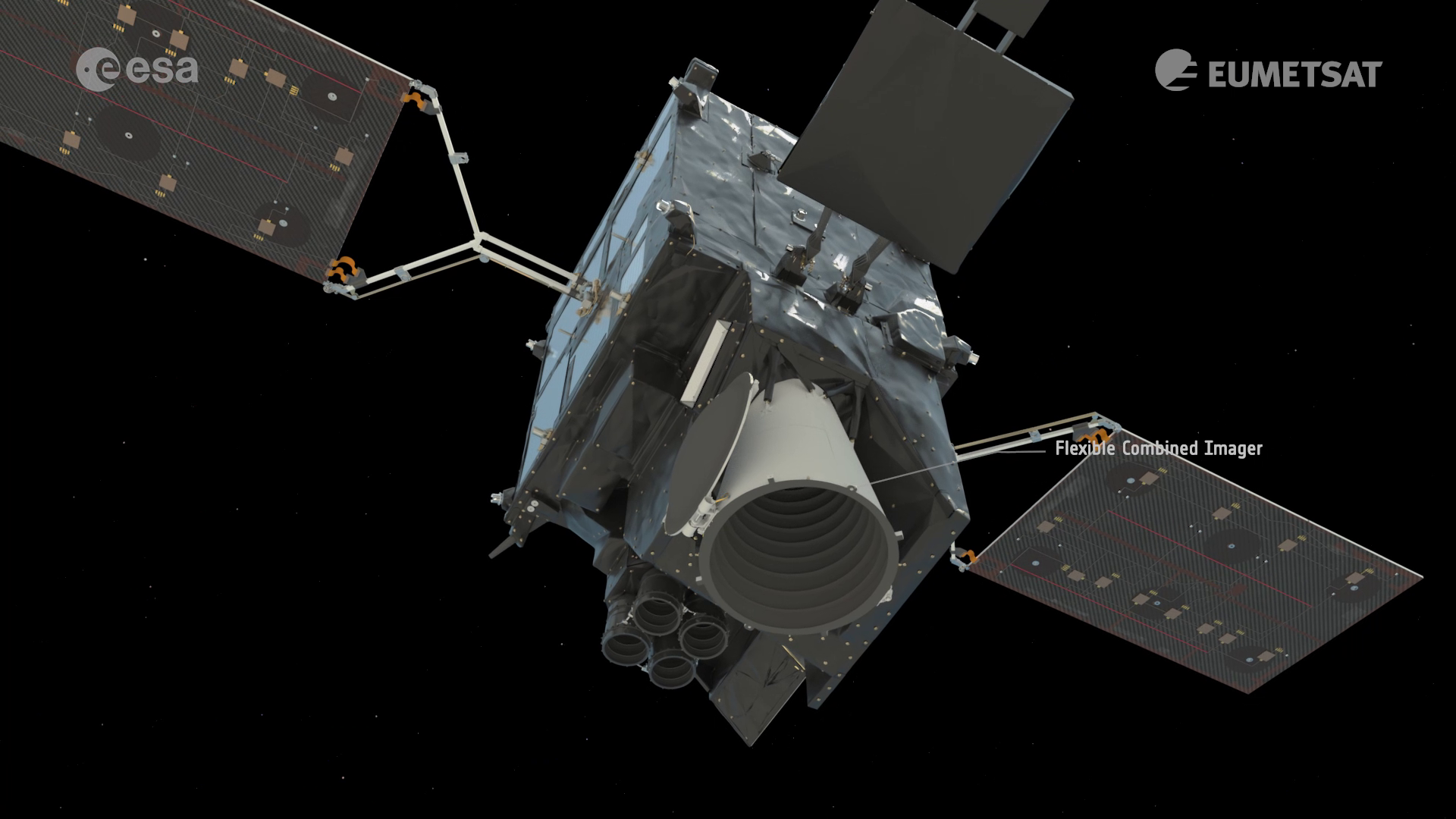
Access the video
The MTG-I satellites also carry two smaller payloads for data collection from remote science beacons and for search and rescue by detecting emergency beacons. These all-new instruments will allow severe storms to be detected in their early stages and will therefore be key for issuing timely warnings.
The MTG mission is a cooperation between Eumetsat and ESA. ESA is responsible developing and procuring the six MTG satellites. Eumetsat defines the system requirements, develops the ground systems, procures the launch services, operates the satellites, and makes the data available to users.
The MTG satellites are built by a large consortium of European industries, led by Thales Alenia Space in cooperation with OHB. The innovative Lightning Imager is developed by Leonardo in Italy. Telespazio provides Eumetsat with launch and in-orbit services.



